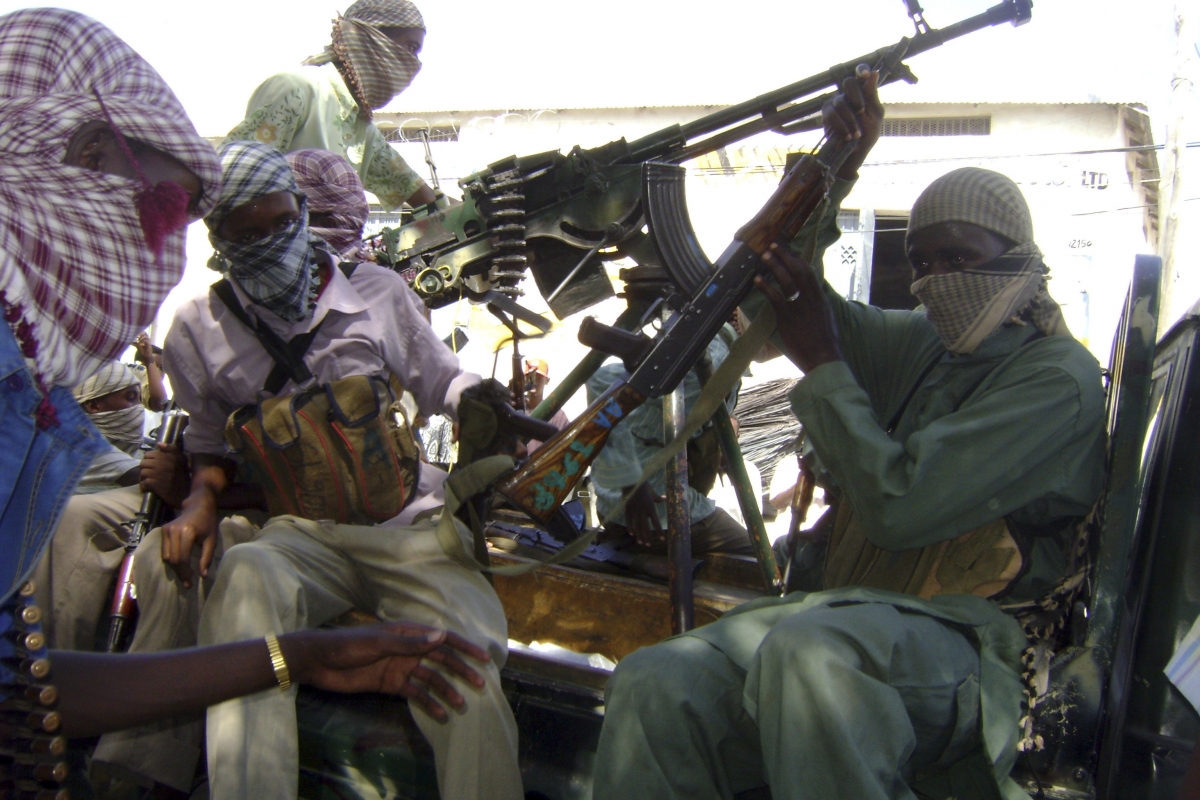Al-Shabaab: Who are the Islamist militants behind Kenya's Garissa University attack?



The Somali-based militant group al-Shabaab has claimed responsibility for a deadly attack against a Kenyan university college.
Masked gunmen from the Islamist cell killed more than 100 people as they stormed the campus of Garissa University, about 150km inland from the Somali border.
As Kenyan security forces lay siege to the college, IBTimes UK has a look at who al-Shabaab are, and what they want.
Origins and success
Al-Shabaab, which is fully named Harakat al-Shabaab al- Mujahideen (Mujahideen Youth Movement) was formed in Somalia in 2006 as a spin-off of the now-defunct Union of Islamic Courts group that controlled Mogadishu and other areas of the country for a few months that year.
It has since been leading an Islamist insurgency aiming to impose a strict interpretation of Sharia law in the country.
Initially the group exploited lawlessness created by more than two decades of almost interrupted conflict in Somalia, to seize control of Mogadishu and large swathes of land, mostly in the southern provinces bordering with Kenya.
According to the US National Counterterrorism Centre (NCTC), al-Shabaab has a loose structure.
"It is not centralised or monolithic in its agenda or goals," NCTC says of the group on its website. "Its rank-and-file members come from disparate clans, and the group is susceptible to clan politics, internal divisions, and shifting alliances".
In 2012 the group pledged allegiance to al-Qaeda. The merger was announced by al-Qaeda's leader Ayman al-Zawahiri. According to the US State Department, which designated al-Shabaab a terrorist organisation in 2008, many of its senior leaders have trained and fought with al-Qaeda in Afghanistan.
Foreign fighters
Between 2006 and 2011 through its military success, the group carved out a safe haven for jihadi training in the Horn of Africa, with Somalia becoming a favourite destination for foreign extremists willing to take up arms.
In 2010 former MI5 head Sir Jonathan Evans warned that as many as 100 Britons with Pakistani, Bangladeshi and West African backgrounds were among would-be-militants who had poured into the country.
One year later, a similar report by the US House of Representatives Homeland Security Committee said that al-Shabaab had recruited more than 40 Muslim Americans and some 20 Canadians.
Among the most famous examples are British native Samantha Lewthwaite, 29, the widow of one of the 7/7 London bombers, and Omar Hammami, 28, an Alabama native who came to international prominence when he posted a series of YouTube videos in which he rapped about jihad.
Lewthwaite, nicknamed "The White Widow" is currently the world's most wanted woman and was allegedly part of a terror unit that planned to stage a bomb attack in the city of Mombasa, Kenya in 2011.
Hammami fell out with the local al-Shabaab leadership and was eventually killed by his former allies in 2013.
African Union involvement and retaliatory attacks
Al-Shabaab's success triggered a regional military response, with Kenya taking a leading role in an African Union (AU) offensive, that eventually forced the Islamists out of Mogadishu in August 2011.
One year later the group was ousted from most towns and cities including the vital port of Kismayo, and confined to rural areas.
The AU peacekeeping mission has slowed down the recruitment of westerners and severely hampered al-Shabaab's power and capabilities.
In recent years al-Shabaab's militants have sporadically crossed into Kenya to carry out attacks. The deadliest so far targeted the upscale Westgate shopping mall in Nairobi, which was stormed by a number of gunmen in September 2013. A three-day siege ensued during which 68 people were killed and more than 175 injured.
The group claimed the attack was in direct response to Kenya's involvement in the AU offensive.
Leadership
Al-Shabaab had two of its recent leaders killed by US airstrikes.
One of its first leaders, Moalim Aden Hashi Ayro, was killed in a strike on the town of Dusamareb in Somalia in 2008.
His successor, the secretive Ahmed Abdi Godane, met the same fate in September 2014 as US Hellfire missiles struck his encampment in south-central Somalia.
The little known Sheikh Ahmed Umar has since taken the reins of the terror group.
© Copyright IBTimes 2025. All rights reserved.




















